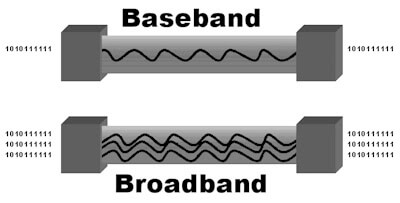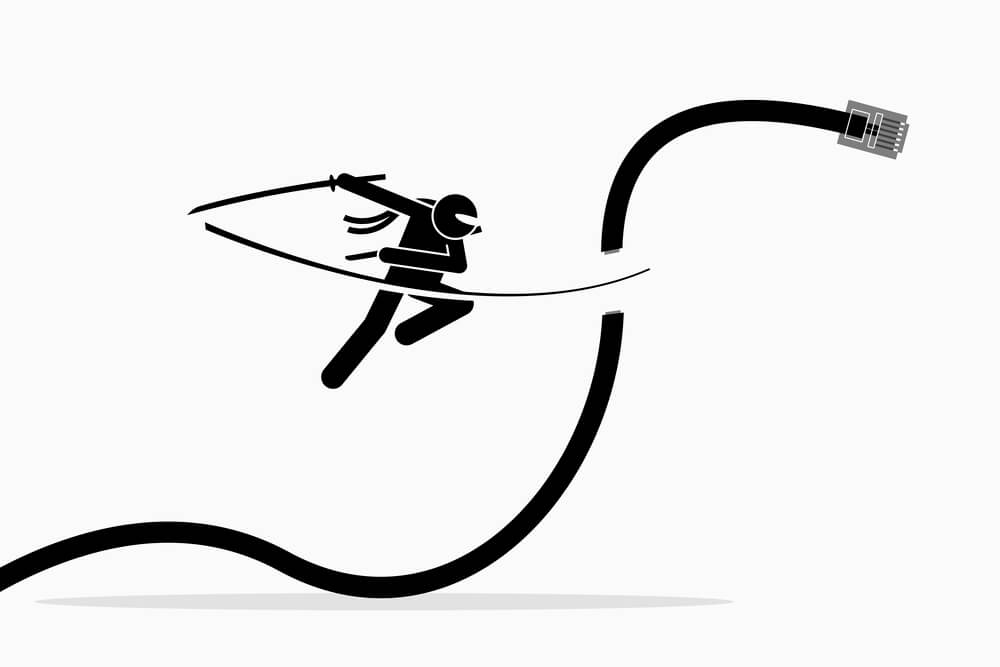
Baseband Transmission Digital Communication

is type of transmission that is using current to send signal over the
wire as digital wave. It can transmit only one signal at a time, due to
requirement of the exclusive use of the wire. This type of transmission
is allowing only on device to transmit in the network at one time, while
other devices need to wait for the end of transmission.
most cases the half-duplexing is used for sending signals upstream and
downstream.
to be send to a server, network interface card is making request to use
the wire. While the wire is busy, NIC retries its request. When the wire
is available, the data is being sent. The process takes milliseconds
and is not noticeable by user.
Broadband Signal
is using analog signal that is modulated. It is used to transmit cable
TV to premises. Broadband is using different frequencies which increases
amount of data it can carry at one time. The amount of data is higher
25 times compared to the baseband. Usually broadband is transmitting
data in one direction, towards user. If user needs to send data, an
individual channel is used for data and special amplifiers are used for
data separation. While broadband signal can travel longer distances it
is having additional expenses due to the use of extra equipment.
- What is baseband transmission?
- Difference between baseband and broadband
- Multiplexing
- MUX Hierarchy
- Line Codes/Data Formats
- Power Spectral Density (PSD)
- Frame Sychronization
All things are explained in detail including images and explanation in simple language, easy to understand and apply.
Baseband Transmission Ppt
Comment below if you are facing any problems to download or view the pdf
Here is some related content
Here are some other programs of DSP Matlab
Discrete fourier transform
Modulo operator
Linear Convolution





